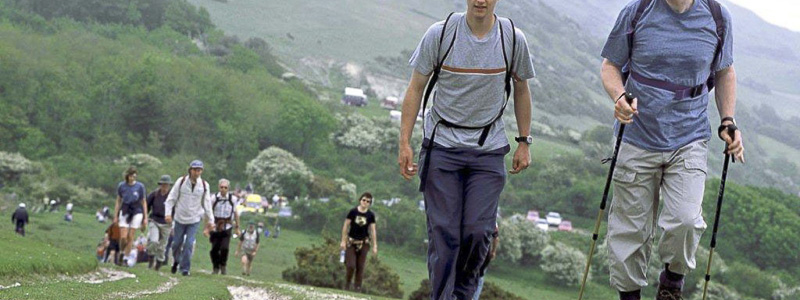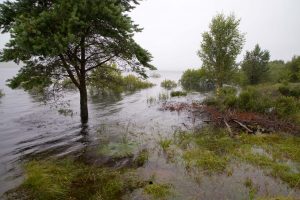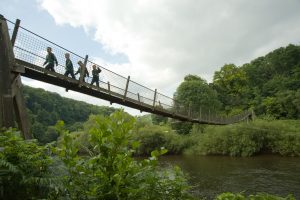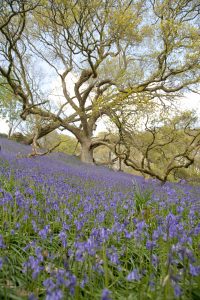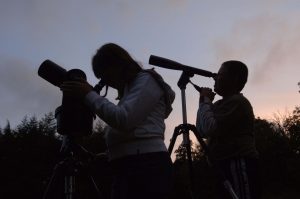By Miranda Winram Head of Strategy and Insight, Forest Enterprise England
(in Volume 28)
Forest Enterprise England (FEE) is the first organisation worldwide that has undertaken a Natural Capital Account for its whole organisation. Miranda Winram, Head of Strategy and Insight at FEE, explains why.
FEE manages the public forest estate in England – that’s about 252,000ha of publically accessible woodland, 160million trees (give or take a couple), 782 scheduled ancient monuments, 110 listed buildings and 30 registered parks or gardens. Our raison d’etre is to encourage as many people as possible to enjoy visiting it all, whilst also making sure we manage it to the highest possible environmental standards.
There’s no doubt in anyone’s mind that what Forest Enterprise delivers is a great, (we’d say brilliant!), public service, but like much of the public sector that’s an intangible benefit, with a highly tangible cost – our turnover is 80-90m pa. Reassuringly, the cost to you, the tax payer, of all that
loveliness is an incredibly modest 45p per adult per annum because we cover most of our costs through selling timber and income from recreational services.
However – brilliant value or not – we still need to justify the small amount of public funding we get, and even more importantly, we need to ensure that our custodianship leaves the public forests in a better shape than we inherited them. Understanding this is really quite tricky – how can you compare the value of a red squirrel reserve with a mountain biking trail? – and Natural Capital Accounting (NCA) is a new tool in the armoury of evidence to help us work this out.
What is NCA?
Essentially it’s about reaching a total £ value of the natural capital value benefits we’re delivering from our land. Because all the different values we generate (like visits from the public, biodiversity protected, carbon captured in our trees, flood water stored and slowly released, air quality improved etc etc) are given a £ value, we can add it all up and compare how we’re doing over time. If the total natural capital value changes then we can use that to ask ourselves questions about our land management and what is making the figure go up or down. And then make even better decisions.
Sounds great – what’s the catch?
Catch 1: Some people say we shouldn’t be putting a value on nature at all, that it’s invaluable and degrades its importance to give it £ signs. We’ve taken the view that in a world where we have to work out the benefit of spending money in one way or another, then we do have to find some way of understanding the relative benefit of that expenditure. And putting a £ against a benefit doesn’t meant that we
won’t look at that in a rounded way; assessing the value of a benefit differently in different contexts. For example the value of open space for birds might be more valuable in one location than more trees to absorb carbon, but not in every place.
Catch 2: The cry of emperor’s new clothes! It’s obvious to many people that a vast amount more value is generated by protecting the natural environment and allowing people to access it than it costs to deliver those benefits, so they ask why we would put lots of time and effort into giving that a specific value that is based on assumptions that can always be queried. We think that that view is a bit lazy – we guess we generate lots of value, and that we do a better job from each year to the next. But we don’t know that’s the case – and we think that’s a basic piece of data we should know and be held to account against. However we calculate our natural capital value, if we do it using a methodology that is replicable every year then we can look at trends over time. And if some of the assumptions change, we can go back in time and make the same changes to the base line so we’re comparing apples with apples. Just like accountants make prior year adjustments for financial accounts.
Catch 3: “You can’t do it!” other critics cry. They say that data isn’t available to add up ‘units’ of all the different natural capital values woodlands (or other natural environments) deliver, or to quantify a £ value for those we can add up. This is absolutely right – we can’t include everything in our Natural Capital Account at the moment. But with a project of this scale you have to start somewhere. We can include some of
the really important things we deliver, for example the amount of carbon that trees sequester has a well established (if very complicated…) methodology, and there is an international price of carbon. So, right now, we can come up with at least a partial account of the natural capital value of the public forest estate. And, with time, we can make this account more and more complete.
FEE decided that despite these ‘catches’ there was value in producing a natural capital account for the whole organisation. We produced our first Account for the 2015-16 financial year, and have just repeated it for 2016-17.
What have we learnt so far?
1. It feels really great as an organisation that is all about public benefit to have a total natural capital asset value to compare to the total asset value that the financial accounts produce. Yes, we knew it was bound to be a bigger figure, but just how much greater was a major surprise. Our natural capital asset value is £22.476bn in the 2016-17 NCA, compared to £1.4bn financial account asset value. This is staggering, particularly given that the account is very partial at the moment.
2. It’s complicated! We’ve just produced our second year’s account and we’ve already picked up several methodologies or technical issues that need updating from the first year. We are sure this updating will continue as we embed the process over the next few years.
3. The value of public access to the estate is highly significant in the total asset value – at the moment it is valued at £4.9bn in the balance sheet. Valuing recreation visits in this way puts into really useful context the cost:benefit of providing access to public woodland adjacent to populations. It gives a major evidence boost for continuing or expanding that kind of provision despite the comparatively high cost in both capital value and management burden. FEE are now considering how to use natural capital value to help guide capital expenditure decisions.
4. There is great value in the detail. The basis of the NCA is a register of natural capital assets. Most of this doesn’t feed into the £ net natural capital asset value, but it lists data like the amount of hectares of different types of designated land we have. We’ve always had this information tucked away in our data bases, but it’s the first time this has been annually gathered and published in an easily comparable way. This gives visible evidence of the impact of our policies, for example the increase in open space habitats to encourage biodiversity. And, as trends emerge over the years, the detail within this asset register will enable good questions to be asked of the FEE leadership team. Not least allowing us to ask whether there are other data sets, e.g. indicator species audits, that we should be measuring and listing to understand our natural capital impact.
5. Starting work on the NCA has highlighted the importance and given impetus to some of our other evidence gathering. For example, assessing the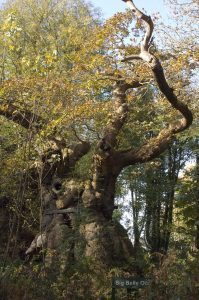 number of visitors and how many visits they make to our woods has always been a thorny question. We’d started new consistent surveying in any event, but not everyone was convinced it was worthwhile. Needing this data for the NCA has given it additional impetus internally, and reinforced the need to seize the nettle and reach an agreed and publishable methodology for our published visitor numbers.
number of visitors and how many visits they make to our woods has always been a thorny question. We’d started new consistent surveying in any event, but not everyone was convinced it was worthwhile. Needing this data for the NCA has given it additional impetus internally, and reinforced the need to seize the nettle and reach an agreed and publishable methodology for our published visitor numbers.
6. Creating the account has identified where the ‘gaps’ in being able to calculate our natural capital value more completely are. This is helping FEE to provide impetus and support to those conducting research in the areas where we are enthusiastic about adding new types of value, for example we hope that in the next year we may be able to add one or more values for flood mitigation, water quality and air quality.
So is NCA the goose that lays the golden egg for an environmental organisation wanting to assess whether it’s doing a good job across a wide range of outcomes? Yes it is. Like all tools it needs careful handling and the right inputs, but NCA is allowing FEE, for the first time, to generate an overall value of the outcomes the public forest estate delivers. And that is, like the natural environment we care for, priceless.
